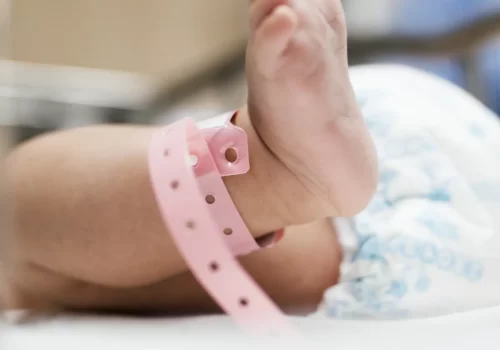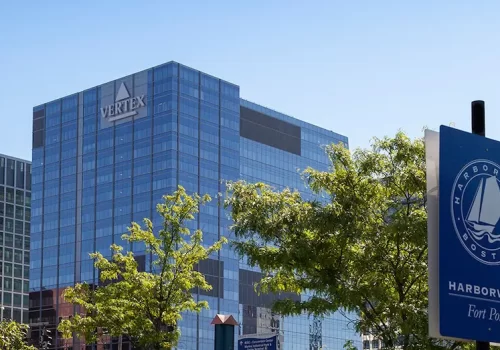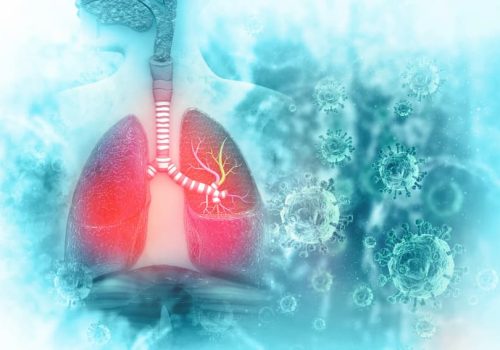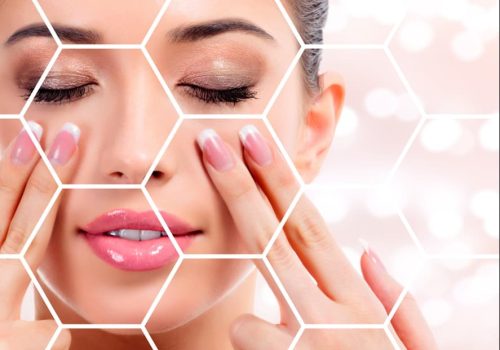Glossary Biomedicine

A)
ALZHEIMER
This disease is classified within the neurodegenerative diseases.
Also called senile dementia, its symptoms are based on cognitive impairment and behavioral disorders.
Memory loss is its main manifestation.
The signs of Alzheimer’s disease are as follows:
- Decreased ability to move or difficulty walking.
- Behavioral and mood changes.
- Difficulty in speaking.
- Memory loss.
- Problems with orientation.
APOPTOSIS
Apoptosis normally occurs in cells that have served their function in the body for long enough and it is their turn to renew themselves, to give rise to other new and young cells.
When this does not take place, cancer appears, the cells become immortal and do not stop proliferating.
ARTHROSIS
Chronic degenerative disease that causes destructive alteration of joint cartilage.
The causes are not known but it is known that a number of factors favor it: obesity, trauma, or the presence of rheumatic diseases in the joint.
In the case of knees, the use of high heels also has an impact.
Osteoarthritis occurs when the cartilage that cushions the ends of bones in the joints progressively deteriorates.
Cartilage is a firm, slippery tissue that allows for virtually frictionless joint movement.
Eventually, if the cartilage wears away completely, the bone will rub against the bone.
Osteoarthritis is often referred to as a “natural wear and tear” disease.
And in addition to cartilage breakdown, osteoarthritis affects the entire joint.
It causes changes in the bone and deterioration of the connective tissues that hold the joint together and attach the muscle to the bone.
It also causes inflammation of the joint lining.
Osteoarthritis is the most common form of arthritis and affects millions of people worldwide.
It occurs when the protective cartilage that cushions the ends of bones wears away over time.
Although osteoarthritis can damage any joint, the disorder most commonly affects the joints of the hands, knees, hips and spine.
B)
BIOBANK
The operation of biobanks is focused on managing, under criteria of safety, quality and efficiency, the reception, processing, storage7 and subsequent transfer of samples to requesting researchers for use in their research projects, as long as these studies comply with all ethical and legal requirements for this type of activity.
Centro de Terapias Avanzadas
C)
CANCER
If we talk about degenerative diseases, it is mandatory to mention this disease.
Cancer is the name used to designate the group of pathologies related to the uncontrolled division of cells, causing abnormal tissue growth.
There are more than 100 types of cancer, but the most common are skin, breast, lung and colorectal cancer.
Today, cancer is one of the leading causes of death worldwide.
STEM CELLS
What are stem cells?
All of the blood cells in your body (white blood cells, red blood cells and platelets) start out as young (immature) cells called hematopoietic stem cells.
Hematopoietic means blood-forming.
These are very young cells that are not fully developed.
MESENCHYMAL STEM CELLS
Mesenchymal stem cells (MSCs) are multipotent stem cells found in bone marrow and are important for making and repairing skeletal tissue, such as cartilage, bone and bone marrow fat.
MESENCHYMAL CELLS IN CARTILAGE
The cells that make up the cartilage of the joints are called chondrocytes.
When a degenerative process occurs in this cartilage, such as osteoarthritis, these cells lose their ability to regenerate and thus decrease in quantity and quality.
This causes the cartilage to dehydrate, weaken and cease to be flexible enough to allow movement.
Mesenchymal stem cells, when injected into these tissues, specialize in mature chondrocytes and promote the repair of existing chondrocytes.
They also promote the supply of nutrients to the tissue, creating an optimal cellular environment for the tissue itself, increasing its capabilities.
MSCs improve the condition of the tissue they colonize by three cellular phenomena: neovascularization (increased blood supply), immunomodulation (balancing the response of the immune system in each tissue) and by inhibiting inflammatory processes.
COA CERTIFICATE
A certificate of analysis (COA) is a document that communicates the results of a scientific test performed on a product, such as food or drugs.
FLOW CYTOMETRY
A laboratory method for determining the number of cells, percentage of live cells, and certain cell characteristics (such as size and shape) in a sample of blood, bone marrow, or other tissue.
CELL CULTURE
Growth of microorganisms such as bacteria and yeast, or human, plant or animal cells in the laboratory.
Cell cultures can be used to diagnose infections, to test new drugs and for research.
Simple, Enriched, Selective, Differential and Enrichment
E)
ENDOCRINOLOGY
Endocrinology and Nutrition is the branch of Medicine that deals with the study of the physiology and pathology of the Endocrine System, as well as the metabolism of nutritional substances and the pathological consequences derived from their alterations.
It also includes theoretical and practical knowledge of the corresponding diagnostic techniques, therapeutic and dietary measures and the norms of Preventive Medicine related to these fields.
The field of action and content of the specialty includes the physiology and pathology of the endocrine glands, the synthesis and secretion of hormones, their metabolism and peripheral actions, the interactions and reciprocal influences of some hormones with others and in relation to the different metabolic processes, and the consequences of their dysfunctions.
The critical analysis and development of the necessary methodology for the determination of hormones and their biological reading, as well as Preventive Medicine and rehabilitation related to this type of processes, are also included in his field.
DEGENERATIVE DISEASES
Degenerative diseases are those caused by the wear and tear of cells.
Over time, the cells of our body degenerate, which in turn impairs the proper functioning of organs and tissues.
This is the main cause of this type of pathology, but unhealthy lifestyle habits can also provoke its appearance.
This wear and tear can manifest different symptoms, depending on the organ or system that is damaged, and the most common degenerative diseases are those that damage the central nervous system, such as Parkinson’s or Alzheimer’s.
In this post we will discuss the most common degenerative diseases and their characteristics.
If you want to study this type of diseases in depth, you can consult the academic offer of the school specialized in Neuropsychology.
Table of Contents
PARKINSON’S DISEASE
Parkinson’s disease is, after Alzheimer’s disease, the most common neurodegenerative disorder.
It manifests itself mainly in the form of tremors, muscle rigidity and slowing of movement.
This degenerative disease is characterized by the absence of dopamine, a hormone that plays a fundamental role in our brain, as it is involved in motor skills, cognition, sleep, attention and learning.
CLINICAL TRIAL
A clinical trial with drugs is research conducted on human subjects that aims to describe or test the effects of those drugs in order to define their efficacy and safety.
To highlight the relevance of clinical trials, it is important to emphasize that almost all currently available treatments are the direct result of clinical research.
ENZYME
Enzymes are complex proteins that produce a specific chemical change in all parts of the body.
For example, they can help break down the food we eat so that the body can use it.
Blood clotting is another example of the work of enzymes.
An enzyme is a biological catalyst.
It is a protein that accelerates the rate of a specific chemical reaction in the cell.
The enzyme is not destroyed during the reaction and is used over and over again.
MULTIPLE SCLEROSIS
It is a disease that affects the nervous system, the brain and the spinal cord.
Its affection causes that there is not a correct communication between the brain and the body, which generates the following symptoms:
- Loss of balance and coordination.
- Loss of vision.
- Numbness or prickling sensation.
- Memory problems
EXOSOMA
A tiny sac-like structure that forms inside a cell and contains some of the cellular proteins, as well as portions of the cell’s DNA and RNA.
Many types of cells, such as cancer cells, release exosomes into the blood that travel to other parts of the body.
What does it consist of?
During the exosome therapy the specialist in Regenerative Medicine injects the patient, directly into the affected area, the external exosomes.
This will start the regenerative treatment.
Exosomes are secreted by the multivesicular bodies (MVBs) of cells through their fusion with the cell membrane.
What are exosomes PDF?
Exosomes are a small subtype of these vesicles (30 to 150 nm), produced by a wide variety of cell types including neurons, tumor cells, epithelial cells and cells of the immune system.
Cell therapy based on mesenchymal/stromal cells is widely applied in modern medicine, even though not all the mechanisms of survival and differentiation have been identified.
However, a few years ago, extracellular elements began to be found that generate new paradigms.
These are nanoparticles made up of microvesicles secreted by cells with an effect on the extracellular matrix, and their impact as an alternative towards cell-free regenerative medicine.
These structures are notoriously and crucially involved in intercellular communication, which has led to a change in the concept of the functions and role played by these vesicles in living organisms, particularly in the restoration of damaged tissues and the inflammatory and immunological response.
Some examples of the biotechnological impact of exosomes in companies and the biopharmaceutical market are discussed.
F)
GROWTH FACTORS:
Growth Factors are proteins found in the blood whose function is intercellular communication to repair injuries.
Injecting these growth factors in the lesions allows to accelerate and improve the process of cellular regeneration, being able to shorten up to half the recovery time.
Among the cell types producing growth factors are fibroblasts, osteoblasts, endothelial cells and leukocytes, especially monocytes and macrophages.
In addition, there are storage sites, such as platelets (in a-granules) and bone (attached to the bone matrix).
What is a growth factor protein?
A protein found on the surface of some cells that binds epidermal growth factor.
The epidermal growth factor receptor protein participates in cell signaling pathways that control cell multiplication and survival.
FDA 351 A
The Food and Drug Administration (FDA) announces the availability of a draft guidance for industry entitled “Reference Product Exclusivity for Biologics Submitted Under Section 351(a) of the PHS Act.”
This draft guidance is intended to assist sponsors developing biologics, sponsors with biologics license applications (BLAs), and other interested parties in providing information and data that will assist the Agency in determining the date of first licensure for a reference product under 351(k)(7)(C) of the Public Health Service Act (PHS Act), as added by the Biologics Price Competition and Innovation Act of 2009 (BCI Act).
The BPCI Act amends the PHS Act and other statutes to create an abbreviated licensure pathway for biologics that are shown to be biosimilar to or interchangeable with
FIBROBLAST
A fibroblast is a type of cell that contributes to the formation of connective tissue, a fibrous cellular material that supports and connects other tissues or organs in the body.
Fibroblasts secrete collagen, a protein that helps maintain the structural framework of tissues.
L)
CELL LINE
Autologous
Autotransplantation (autologous): “Auto” means self.
The stem cells in autologous transplants come from the same person who will receive the transplant, so the patient is his or her own donor.
Allogeneic: From another donor
N)
NTA NANOPARTICLES
Nanoparticle Tracking Analysis (NTA) uses both the light scattering and Brownian motion properties of nanoparticles to calculate their size distribution, estimate their concentration and analyze their trajectory when suspended in liquid.
P)
PATHOLOGY
Part of medicine that studies the anatomical and physiological disorders of diseased tissues and organs, as well as the symptoms and signs through which diseases manifest themselves and the causes that produce them.
PLAQUETAS
Platelets play an important role in blood clotting.
Normally, when one of your blood vessels ruptures, it begins to bleed.
The platelets will clot (clump together) to plug the injury to the blood vessel and stop the bleeding.
Vertebrate blood cell, small and without nucleus, oval or round disk-shaped, involved in blood clotting.
PROTEIN
Proteins are molecules made up of amino acids, which are linked by a type of bond known as peptide bonds.
For example: fibrin, elastin, actin, insulin, etc.
Proteins are large, complex molecules that perform many critical functions in the body.
They perform most of the work in cells and are necessary for the structure, function, and regulation of the body’s tissues and organs.
PRP PLATELET-RICH PLASMA (GROWTH FACTORS):
It uses signaling proteins, cytokines and other substances obtained from the patient’s own blood.
These substances trigger a whole series of biological processes (blood vessel formation, cell proliferation and migration…) that help repair damaged tissues
First, a small amount of blood is drawn from the patient (20-60 cc depending on the lesion) and centrifuged.
From this centrifugation:
- The red cells are deposited at the bottom of the tube.
- In the top layer, the leukocytes or white blood cells are deposited.
And, in the upper layer, the plasma with all the substances that will make possible the repair of the damaged tissue. - Within the plasma layer, we can differentiate two fractions: the platelet-rich fraction and the platelet-poor fraction.
Both have reparative properties, either alone or in combination.
T)
DIAMAGNETIC THERAPY
Diamagnetic therapy is a NON INVASIVE therapeutic and rehabilitative technique that bases its operating principles on the use of hyperpulsed high intensity magnetic fields at low frequency (the device generates a magnetic field of 2.2 TESLA intensity, pulsed at a frequency of 7hz).
You may be interested in
When we feel physical pain, we go to the doctor in search of an explanation and, above all, a solution to relieve it. But What happens when the pain is
Life is demanding. Day-to-day life is often marked by schedules, plans, goals, obligations… pure activity. We need to move. On the other hand, WHO recommendations are very clear: physical activity
Eli is an African-American boy who was born again at the age of 11. The vast majority of the 300,000 children born each year with sickle cell disease are not
January 13 marks the World Day for the Fight against Depression. A disease that requires special attention and awareness. Not only because of the impact it has on the daily
A biological treasure, a miracle of life, an extraordinary reality… These are some of the adjectives that the scientific world has dedicated to hematopoietic stem cells in recent years. It
Vertex Pharmaceuticals headquarters in Boston, Massachusetts. World Diabetes Day was commemorated on November 14 to raise public awareness of the impact of this disease. A disorder that already affects more
The multiplication and differentiation capacity of hematopoietic stem cells is making the news more and more frequently. In fact, this article would be endless if we were to mention the
The potential of regenerative medicine to improve the quality of life in chronic degenerative diseases continues to grow. In this case, we will learn about its ability to slow down
Chronic Obstructive Pulmonary Disease (COPD) is a serious respiratory disease that affects millions of people worldwide. Until now, treatments have focused on relieving symptoms and improving airflow with bronchodilators. However,
Do you feel you want to improve your skin or some other aesthetic detail? Stem cells can be used in facial anti-aging treatments. Over the years, the skin loses collagen,











